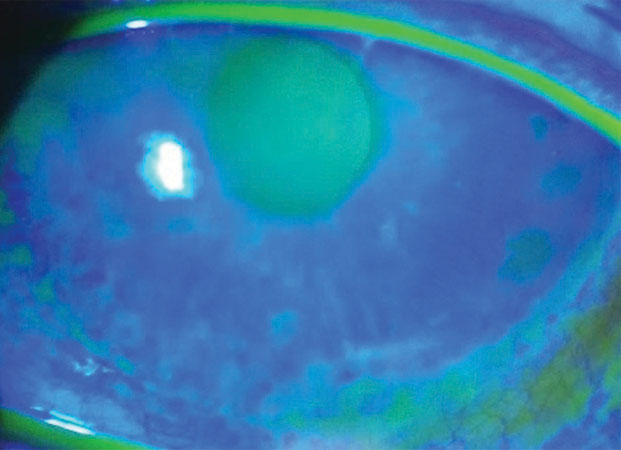 |
| The dry eye patient cohort in this study treated with rhNGF eye drops experienced significant symptom improvement, and researchers believe it could be a promising therapy for this population. Photo: Chandra Mickles, OD. Click image to enlarge. |
Most dry eye therapies only address inflammation or tear film instability. Neurosensory abnormalities have been increasingly recognized as a key feature of the condition, so improving nerve health may be critical to restoring ocular homeostasis. Researchers recently found that recombinant human nerve growth factor (rhNGF) eye drops were well-tolerated in patients with moderate to severe dry eye as a promising therapy option. The results of the study were presented in Denver during the 2022 ARVO annual meeting.
This randomized, vehicle-controlled phase II study enrolled patients 18 and older who had experienced moderate to severe dry eye for six months or longer. The researchers randomized the 261 participants into three treatment groups that received the following drops in both eyes for four weeks plus 12 weeks follow-up: 20μg/mL rhNGF TID, 20μg/mL rhNGF BID plus vehicle treatment once a day or vehicle TID. The primary endpoint was the change from baseline in Schirmer testing without anesthesia at week four. Secondary endpoints included change in Symptom Assessment in Dry Eye (SANDE) scores.
The mean change from baseline in Schirmer testing at week four was higher in the growth factor drops BID than the vehicle control arm (4.0mm vs. 1.7mm). Rates of response (score >10mm/five minutes) at week four were also higher in the TID (25.9%) and BID (29.3%) arms compared with the vehicle (11.9%) arm.
During follow-up, the TID arm had significantly greater SANDE score reductions, indicating better symptom improvement, than the vehicle control arm at week eight (-27.2 vs. -16.9), week 12 (-27.9 vs. -16.4) and week 16 (-26.5 vs -16.7). More patients in the rhNGF drop arms than the vehicle arm reported one or more ocular adverse events in weeks one through four (69.4% TID, 65.5% BID, 13.6% vehicle control); the most common was eye pain (in 63.5% of TID, 46.4% of BID, 4.5% of vehicle cases).
“While mild eye pain was commonly reported during the four-week treatment period in patients who received rhNGF, it was generally transient and not reported after treatment discontinuation,” the researchers wrote in their abstract.
Original abstract content © Association for Research in Vision and Ophthalmology 2022.
Toyos M, Wirta D, Goosey J, et al. Phase II study of the efficacy and safety of recombinant human nerve growth factor (rhNGF) in patients with moderate-to-severe dry eye. ARVO 2022 annual meeting. |

